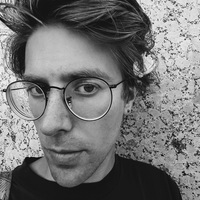Solveig Nelson, PhD | The Art Institute of Chicago (original) (raw)

Related Authors
Uploads
Papers by Solveig Nelson, PhD
For videos please contact the Video Data Bank, www.vdb.org
is the first MFA thesis show in the University of Chicago's studio art program in which the gradu... more is the first MFA thesis show in the University of Chicago's studio art program in which the graduating class decided to come together and exhibit as a single entity. Limitations in gallery space have required expanding the site of the exhibition, from cinemas to emergency exits. While the group exhibition format gestures toward social relationsa collectivity-there is no stable center or singular point of gravity.
Casilda Sánchez's best-known digital-video installation, As Inside as the Eye Can See, 2009, pict... more Casilda Sánchez's best-known digital-video installation, As Inside as the Eye Can See, 2009, pictures two eyes with long lashes approaching each other in extreme close-up. This confrontation between anatomies brings to mind the physical and social collisions of body art, but it also reads as a pun on Clement Greenberg's celebration of painting as an appeal to "eyesight alone." Sánchez's first solo exhibition, mounted at Aspect Ratio, continued to play with conventions of vision and picturing that have been historically linked to painting, but were here approached through the material conditions of the moving image.
For videos please contact the Video Data Bank, www.vdb.org
is the first MFA thesis show in the University of Chicago's studio art program in which the gradu... more is the first MFA thesis show in the University of Chicago's studio art program in which the graduating class decided to come together and exhibit as a single entity. Limitations in gallery space have required expanding the site of the exhibition, from cinemas to emergency exits. While the group exhibition format gestures toward social relationsa collectivity-there is no stable center or singular point of gravity.
Casilda Sánchez's best-known digital-video installation, As Inside as the Eye Can See, 2009, pict... more Casilda Sánchez's best-known digital-video installation, As Inside as the Eye Can See, 2009, pictures two eyes with long lashes approaching each other in extreme close-up. This confrontation between anatomies brings to mind the physical and social collisions of body art, but it also reads as a pun on Clement Greenberg's celebration of painting as an appeal to "eyesight alone." Sánchez's first solo exhibition, mounted at Aspect Ratio, continued to play with conventions of vision and picturing that have been historically linked to painting, but were here approached through the material conditions of the moving image.
























